9 books about Landscapes in art
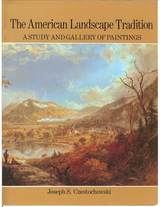
The American Landscape Tradition
a study and gallery of paintings
Joseph S. Czestochowski
International Arts, 2009
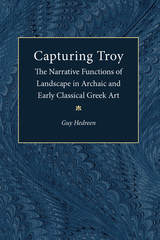
Capturing Troy
The Narrative Functions of Landscape in Archaic and Early Classical Greek Art
Guy Hedreen
University of Michigan Press, 2002
Those in the field of classical art will appreciate this investigation of the most common remnant of ancient Greek society available to the modern scholar, the painted vase. Guy Hedreen discusses how the imagery on Greek vases is only sometimes used as a narrative device, and delves further into the extent to which visual imagery depends upon literary sources. With the backdrop of one of the world's earliest, and some would argue greatest stories ever told, the sacking of Troy, Hedreen brings the reader into one of the most current and persistent topics in the art world: Narrative vs. Art. Employing a wide range of stunning visual imagery to illustrate his points, this insightful original text, Capturing Troy is a valuable new contribution to the subject, accessible to the learned scholar and beginning student alike.
Guy Michael Hedreen is Professor of Art, Williams College.
Guy Michael Hedreen is Professor of Art, Williams College.
[more]
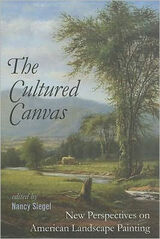
The Cultured Canvas
New Perspectives on American Landscape Painting
Nancy Siegel
University of New Hampshire Press, 2012
Written from aesthetic, sociopolitical, cultural, and literary perspectives, The Cultured Canvas explores myriad ways in which American visual culture can be evaluated through newly conceived thematic and ideological approaches. This book moves beyond our accepted notion of the oil painting on canvas to consider the term as both a literal and figurative surface upon which artists construct or construe the landscape as an intellectual, cultural, or physical entity. It provides an innovative reevaluation of traditional thought concerning the Hudson River School, Luminism, and artists of the Civil War era.
As interdisciplinary emphases are employed with increasing frequency in arts and humanities courses, the breadth and depth of topics covered in this collection will provide a much-needed text for scholars in American art history, nineteenth-century American studies, and landscape studies, in addition to serving as a complement to courses in American literature and culture.
Hardcover is un-jacketed.
As interdisciplinary emphases are employed with increasing frequency in arts and humanities courses, the breadth and depth of topics covered in this collection will provide a much-needed text for scholars in American art history, nineteenth-century American studies, and landscape studies, in addition to serving as a complement to courses in American literature and culture.
Hardcover is un-jacketed.
[more]
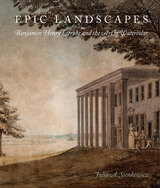
Epic Landscapes
Benjamin Henry Latrobe and the Art of Watercolor
Julia Sienkewicz
University of Delaware Press, 2011
Epic Landscapes is the first study devoted to architect Benjamin Henry Latrobe’s substantial artistic oeuvre from 1795, when he set sail from Britain to Virginia, to late 1798, when he relocated to Pennsylvania. Thus, this book offers the only extended consideration of Latrobe’s Virginian watercolors, including a series of complex trompe l’oeil studies and three significant illustrated manuscripts. Though Latrobe’s architecture is well known, his watercolors have received little critical attention. Epic Landscapes rediscovers Latrobe’s watercolors as an ambitious body of work and reconsiders the close relationship between the visual and spatial sensibility of these images and his architectural designs. It also offers a fresh analysis of Latrobe within the context of creative practice in the Atlantic world at the end of the eighteenth century as he explored contemporary ideas concerning the form of art for Republican society and the social impacts of revolution.
Published by University of Delaware Press. Distributed worldwide by Rutgers University Press.
Published by University of Delaware Press. Distributed worldwide by Rutgers University Press.
[more]

Geo-Narratives of a Filial Son
The Paintings and Travel Diaries of Huang Xiangjian (1609–1673)
Elizabeth Kindall
Harvard University Press, 2016
Huang Xiangjian, a mid-seventeenth-century member of the Suzhou local elite, journeyed on foot to southwest China and recorded its sublime scenery in site-specific paintings. Elizabeth Kindall’s innovative analysis of the visual experiences and social functions Huang conveyed through his oeuvre reveals an unrecognized tradition of site paintings, here labeled geo-narratives, that recount specific journeys and create meaning in the paintings. Kindall shows how Huang created these geo-narratives by drawing upon the Suzhou place-painting tradition, as well as the encoded experiences of southwestern sites discussed in historical gazetteers and personal travel records, and the geography of the sites themselves. Ultimately these works were intended to create personas and fulfill specific social purposes among the educated class during the Ming-Qing transition. Some of Huang’s paintings of the southwest, together with his travel records, became part of a campaign to attain the socially generated title of Filial Son, whereas others served private functions. This definitive study elucidates the context for Huang Xiangjian’s painting and identifies geo-narrative as a distinct landscape-painting tradition lauded for its naturalistic immediacy, experiential topography, and dramatic narratives of moral persuasion, class identification, and biographical commemoration.
[more]
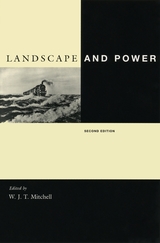
Landscape and Power, Second Edition
Edited by W. J. T. Mitchell
University of Chicago Press, 2002
The first edition of this book, published in 1994, reshaped the direction of landscape studies by considering landscape not simply as an object to be seen or a text to be read, but as an instrument of cultural force, a central tool in the creation of national and social identities. This second edition adds not only a new preface, but five new essays—from Edward Said, W. J. T. Mitchell, Jonathan Bordo, Michael Taussig, and Robert Pogue Harrison-extending the scope of the book in remarkable ways.
[more]
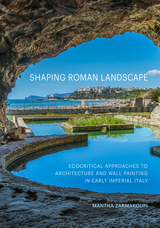
Shaping Roman Landscape
Ecocritical Approaches to Architecture and Wall Painting in Early Imperial Italy
Mantha Zarmakoupi
J. Paul Getty Trust, The
A groundbreaking ecocritical study that examines how ideas about the natural and built environment informed architectural and decorative trends of the Roman Late Republican and Early Imperial periods.
Landscape emerged as a significant theme in the Roman Late Republican and Early Imperial periods. Writers described landscape in texts and treatises, its qualities were praised and sought out in everyday life, and contemporary perceptions of the natural and built environment, as well as ideas about nature and art, were intertwined with architectural and decorative trends.
This illustrated volume examines how representations of real and depicted landscapes, and the merging of both in visual space, contributed to the creation of novel languages of art and architecture. Drawing on a diverse body of archaeological, art historical, and literary evidence, this study applies an ecocritical lens that moves beyond the limits of traditional iconography. Chapters consider, for example, how garden designs and paintings appropriated the cultures and ecosystems brought under Roman control and the ways miniature landscape paintings chronicled the transformation of the Italian shoreline with colonnaded villas, pointing to the changing relationship of humans with nature. Making a timely and original contribution to current discourses on ecology and art and architectural history, Shaping Roman Landscape reveals how Roman ideas of landscape, and the decorative strategies at imperial domus and villa complexes that gave these ideas shape, were richly embedded with meanings of nature, culture, and labor.
Landscape emerged as a significant theme in the Roman Late Republican and Early Imperial periods. Writers described landscape in texts and treatises, its qualities were praised and sought out in everyday life, and contemporary perceptions of the natural and built environment, as well as ideas about nature and art, were intertwined with architectural and decorative trends.
This illustrated volume examines how representations of real and depicted landscapes, and the merging of both in visual space, contributed to the creation of novel languages of art and architecture. Drawing on a diverse body of archaeological, art historical, and literary evidence, this study applies an ecocritical lens that moves beyond the limits of traditional iconography. Chapters consider, for example, how garden designs and paintings appropriated the cultures and ecosystems brought under Roman control and the ways miniature landscape paintings chronicled the transformation of the Italian shoreline with colonnaded villas, pointing to the changing relationship of humans with nature. Making a timely and original contribution to current discourses on ecology and art and architectural history, Shaping Roman Landscape reveals how Roman ideas of landscape, and the decorative strategies at imperial domus and villa complexes that gave these ideas shape, were richly embedded with meanings of nature, culture, and labor.
[more]
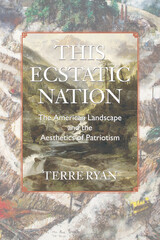
This Ecstatic Nation
The American Landscape and the Aesthetics of Patriotism
Terre Ryan
University of Massachusetts Press, 2011
Americans' cultural love affair with their country's landscape started in the nineteenth century, when expansionism was often promoted as divine mission, the West was still the frontier, and scenery became the backdrop of nationalist mythology. With a promise of resources ripe for development, Manifest Destiny–era aesthetics often reinforced a system of environmental degradation while preserving the wide and wild view. Although the aesthetics have evolved, contemporary media are filled with American landscape images inspired by the nineteenth century.
Terre Ryan examines this phenomenon by exploring the overlapping trails of national mythology, landscape aesthetics, patriotic discourse, and public policy. Tracing her journeys around bombing grounds in Nevada, logging sites in Oregon, and energy fields in Wyoming, she argues that business and government agencies often frame commercial projects and national myths according to nineteenth-century beliefs about landscape and bounty. Advertisements and political promotional materials following this aesthetic framework perpetuate frontier-era ideas about the environment as commodity, scenery, and cultural trashlands. Transmitted through all types of media, nineteenth-century perspectives on landscape continue to inform mainstream perceptions of the environment, environmental policies, and representations of American patriotism.
Combining personal narrative with factual reportage, political and cultural critique, and historical analysis, Ryan reframes the images we see every day and places them into a larger national narrative.
Terre Ryan examines this phenomenon by exploring the overlapping trails of national mythology, landscape aesthetics, patriotic discourse, and public policy. Tracing her journeys around bombing grounds in Nevada, logging sites in Oregon, and energy fields in Wyoming, she argues that business and government agencies often frame commercial projects and national myths according to nineteenth-century beliefs about landscape and bounty. Advertisements and political promotional materials following this aesthetic framework perpetuate frontier-era ideas about the environment as commodity, scenery, and cultural trashlands. Transmitted through all types of media, nineteenth-century perspectives on landscape continue to inform mainstream perceptions of the environment, environmental policies, and representations of American patriotism.
Combining personal narrative with factual reportage, political and cultural critique, and historical analysis, Ryan reframes the images we see every day and places them into a larger national narrative.
[more]
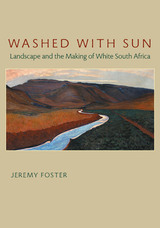
Washed with Sun
Landscape and the Making of White South Africa
Jeremy Foster
University of Pittsburgh Press, 2008
South Africa is recognized as a site of both political turmoil and natural beauty, and yet little work has been done in connecting these defining national characteristics. Washed with Sun achieves this conjunction in its multidisciplinary study of South Africa as a space at once natural and constructed. Weaving together practical, aesthetic, and ideological analyses, Jeremy Foster examines the role of landscape in forming the cultural iconographies and spatialities that shaped the imaginary geography of emerging nationhood. Looking in particular at the years following the British victory in the second Boer War, from 1902 to 1930, Foster discusses the influence of painting, writing, architecture, and photography on the construction of a shared, romanticized landscape subjectivity that was perceived as inseparable from “being South African,” and thus helped forge the imagined community of white South Africa.
In its innovative approach to South Africa's history, Washed with Sun breaks important new ground, combining the persuasive theory of cultural geography with the material specificity of landscape history.
In its innovative approach to South Africa's history, Washed with Sun breaks important new ground, combining the persuasive theory of cultural geography with the material specificity of landscape history.
[more]
READERS
Browse our collection.
PUBLISHERS
See BiblioVault's publisher services.
STUDENT SERVICES
Files for college accessibility offices.
UChicago Accessibility Resources
home | accessibility | search | about | contact us
BiblioVault ® 2001 - 2024
The University of Chicago Press









